So now that I’ve talked a bit about fibres and weaves, and how they combine, let’s talk specifically about which ones work best for lolita!
When it comes to lolita, there are a lot of fabrics that you can use if you’re looking to sew your own items. So how do you know which fabrics are appropriate? How do you know that the fabric you’ve chosen is of good quality and not something cheap or tacky?
The quickest and easiest method is to look at what other lolita fashion garments have used, and try to emulate those choices. The old advice of “look for 100% cotton” isn’t really great to go by anymore, so let’s look at a few ways fabric is used!
Look to the Brands for Inspiration (and Validation)
In general, lolita fashion brands tend towards using various plain weave fabrics, particularly for digitally printed pieces, because plain weaves provide a smooth and even surface, ready for decoration of all types. They are sturdy, simple to execute, and can be changed dramatically depending on their yarn types and final finishing. A few examples of plain weave materials include types of broadcloth, chiffon, and butcher cloth, but there are numerous others.
All of the dresses in the above photos use plain weave fabrics. Despite being the same weave pattern, they each have dramatically different appearances as a result of the properties of their different yarns. |
Plain weave materials, however, are not the only weave used by lolita designers and brands. Other common weave types used in lolita include satin, twill, as well as pile weaves (such as velvet or velveteen). Cotton sateen in particular is a popular choice for artists and indie designers creating their own lolita prints on websites such as Spoonflower, because it provides many of the positive aspects of satin (soft lustre, smooth drape), without the downsides (lack of breathability, usually too shiny).
Designers and brands frequently include the fibre content and weave information on their listing pages when the items go up for sale. Unfortunately, this information isn’t always consistent or well-translated. Lolibrary’s volunteers have taken pains over the years to transfer many these details to the archives for past items. While it isn’t included for every dress, you can look into it yourself! Try searching the site for pieces using jacquard, crêpe de Chine, or a more unusual fabric some time to see how many there might be!
Fabric Types and Examples
There are a lot of fabric types used by designers and brands that you might not realise are already in your wardrobe, so I've compiled a list of fabric types that are appropriate for lolita fashion garments! Some are more common than others.
I’ve included photos for quite a few of these examples from existing lolita brands, to give you an idea of how they are used and what they look like. In particular, I have done my best to get up-close photographs of the details of the fibre yarns. For those instances where I was unable to get detail photos from individual owners, I have used stock photographs from the original brands instead. I have also endeavoured to translate the terms back into Japanese and Chinese, based on examples used by existing brands.
For close-up images, you can click on the thumbnail or release name to view a larger resolution file of the fabric.
Broadcloth |
|
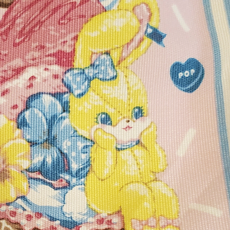 |
|
Angelic Pretty |
|
Broadcloth is a plain weave fabric, where the weft yarns are finer than the warp yarns, resulting in a lightly ribbed texture that follows the grain. It creates a good ground for printing surfaces or other embellishment. This fabric comes in different weights, and is appropriate for dresses and skirts; if you’re sewing your own items, avoid the broadcloth in the quilting section, and be sure to look for apparel weights instead. Broadcloth is used across most major lolita fashion brands for solids and prints, usually in blended fibre fabrics. |
|
Common fibre types for this fabric include: |
|
Butcher weave |
|
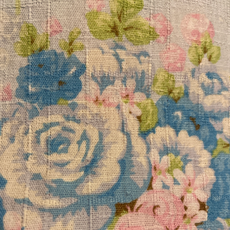 |
|
Baby, the Stars Shine Bright |
|
Butcher weave fabric is a type of slubbed weave fabric. It has an irregular and organic surface, with large bumps and knots in the yarns that create an interesting texture. The slubs are visible in both the warp and weft of this type of fabric and varied weights of yarn are used to increase the effect of the slubs. Cotton butcher weave is particularly commonly used by Baby, the Stars Shine Bright in both their main line and the Alice and the Pirates sub-line. See: Slubbed weave |
|
Common fibre types for this fabric include: |
|
Challis |
|
Challis is lightweight and fine, with a very fluid drape, but minimal sheen. When cut on the bias, it flows beautifully. Challis is generally made from rayon, but can be made from blended fabrics where rayon is the primary fibre type. Adding cotton to rayon fabrics firms up their hand and makes them less slippery, while adding polyester to rayon increases the lustre. Rayon, acetate, and viscose are all from a similar family of semi-synthetic fabrics, produced from different types of plant cellulose. As a result, they will behave relatively similarly to one another, although acetate has a much stiffer hand than either rayon or viscose. |
|
Common fibre types for this fabric include: |
|
Chambray / シャンブレー |
|
Chambray is a type of broadcloth, but tends to be a medium or heavy weight. It traditionally is a two-tone material, where the weft and warp are different colours, to create a variegated look. The traditional combination for chambray is a white weft and a coloured warp. Brands frequently use chambray as a solid material. See: Broadcloth |
|
Common fibre types for this fabric include: |
|
Check weave |
|
Alice and the Pirates |
|
Materials such as tartan, madras, or plaid all fall under the category of check weave fabric. The yarns creates a pattern using different colours woven into geometric formations, such that the patterns are visible on both sides of the material. There are also printed approximations of these materials, in the case of lolita dresses that use the patterns as a background to other elements. Check weaves are particularly common in old school, sweet, and punk lolita, but are frequently seen in classic as well. |
|
Common fibre types for this fabric include: |
|
Chiffon (Printed) |
|
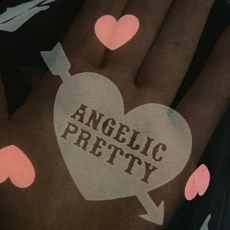 |
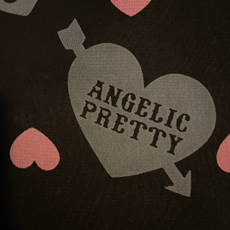 |
Angelic Pretty |
Angelic Pretty |
Chiffon (Patterned) |
|
|
|
Atelier Pierrot |
Baby, the Stars Shine Bright |
Chiffon (Solid) |
|
|
|
Atelier Pierrot |
Alice and the Pirates |
Chiffon is a plain weave fabric that belongs to the crêpe family, due to its use of finely twisted yarns. Most lolita fashion chiffons are made from polyester. This material has become increasingly popular in lolita fashion in recent years, as both a trim element, and a main fabric for flowing, elegant dresses. Its light and airy appearance is attractively lush, but its slippery surfaces can make it difficult to sew with. While often suggested for summer-wear because of its light appearance, polyester chiffon is actually not as breathable as a cotton equivalent, and can trap body heat and sweat as a result. Silk chiffon is very breathable and light, but considerably more expensive than its synthetic equivalent. Polyester chiffon can be printed on quite nicely due to its smooth finish, and is often used by brands for spring and summer releases as a result. Chiffon also comes in a wide variety of finishes and gimmicks beyond printing. Lurex and lame threads are often introduced for sparkle, and burnout, foiling, and film treatment techniques are often used to add extra depth and interest to the fabric. |
|
Common fibre types for this fabric include: |
|
Chirimen |
|
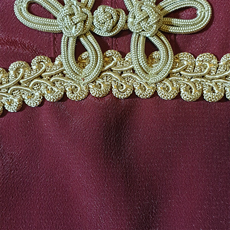 |
|
Metamorphose temps de fille |
|
Chirimen fabric is a traditional Japanese textile typically made from silk, polyester, or wool. It has a crêpe texture, with a tighter weft yarn, which results in a distinctive, wavy pattern in the final fabric. This particular material is popular for simple cuts and luxurious designs both, because its weave gives the illusion of iridescence. Metamorphose frequently uses a slightly less dense variety of this particular type of fabric for light-weight designs. See: Crêpe and Crêpe de Chine |
|
Common fibre types for this fabric include: |
|
Crêpe |
|
|
|
Silk crêpe material is a family of fabrics that are comprised of twisted yarns, which create a dimpled, crisp appearance. Crêpe de Chine, chiffon, and georgette are all types of crêpe fabrics, though each has their own additional properties, depending on the yarns used. See: Chiffon, Chirimen, Georgette, and Crêpe de Chine |
|
Common fibre types for this fabric include: |
|
Crêpe de Chine |
|
 |
|
Metamorphose temps de fille |
|
This fabric has a slightly grainy texture, which is the result of the fine yarns being heavily twisted before weaving. It is dense, but lightweight and has a soft, matte lustre. Metamorphose temps de fille favours a polyester crêpe de Chine for the solid fabrics used as contrast on many of their printed pieces, particularly their wa-lolita designs. They also have printed designs that use the fabric. Angelic Pretty also commonly uses the fabric as a solid to contrast their jacquards. See: Crêpe |
|
Common fibre types for this fabric include: |
|
Dupioni / Shantung / シャンタン |
|
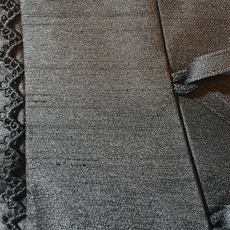 |
|
Baby, the Stars Shine Bright |
Atelier Pierrot |
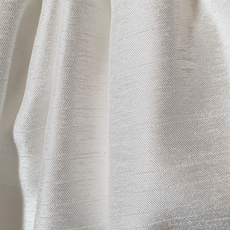 |
|
Metamorphose temps de fille |
Metamorphose temps de fille |
These fabrics are a specific type of slubbed weave. Both are textured, and commonly used for more “formal” looking lolita designs in polyester due to their well-structured and luxurious finish. This material uses the plain weave pattern, but the heavy slubs give it a more dramatic look. Shantung has a subtle, uneven texture, which belies its plain weave, while dupioni has a much heavier slubs, and typically brighter sheen. Depending on the weight and finish of each fabric, they can range between a bright, satin lustre, and a dull, matte lustre. These materials in silk are inevitably expensive materials. Atelier Pierrot and Baby, the Stars Shine Bright frequently use polyester shantung and faux dupioni on dresses, especially when trying to achieve a more luxurious look. See: Slubbed weave |
|
Common fibre types for this fabric include: |
|
Faux fur |
|
Fur and more commonly, faux fur, are sometimes used in lolita fashion as trims on outerwear or themed outfits. Faux fur is generally made from acrylic or a polyester fibre pile, and has a distinct nap. The ground or backing material for faux fur is most commonly a plain weave canvas, usually in a synthetic fibre. The faux fur fibres are attached to this backing using a loop stitch or tufting technique, in which the piles are “locked” into the top layer of the fabric weave. |
|
Common fibre types for this fabric include: |
|
Felt |
|
There are two types of “felt” that you might find in lolita fashion: one in which the raw wool has been turned into a flat material without weaving, by agitating and abrading the loose fibres, and the other which involves abrading a woven wool material to produce a soft, felted surface on one side. Both types of felting undergo shrinking to make the material denser and provide better insulation. The latter fabric is more appropriate for garments, while the former is better suited to accessories or hats. In lolita, you will often find felt accessories such as berets and other hats, and outwear like coats, with various fibre contents. |
|
Common fibre types for this fabric include: |
|
Fibre blend fabrics |
|
Angelic Pretty |
|
Many lolita brands use fabrics comprised of blended fibres, to maximise the benefits of different combination yarns. I’ve talked a little bit about this under some of the other fabric types, but wanted to give the subject a bit more attention on its own. Blended fibre fabrics incorporate some of the best aspects of each fibre type, in order to produce an overall more suitable material for the final product. For example, Baby’s check dresses are often not 100% cotton as many people assume, but a blend of Rayon and Polyester, so that the material is softer and less wrinkle-prone. Similarly, Angelic Pretty uses a bit of acetate or cotton in their polyester jacquard fabrics, for extra lustre and a bit of a stiffer hand, respectively. Using a blended fabric can improve the qualities of the final weave, depending on the desired properties. |
|
Common fibre types for this fabric include: |
|
Gauze / ガーゼ |
|
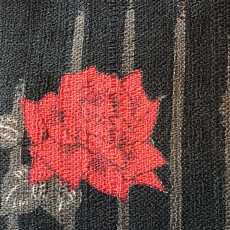 |
|
Alice and the Pirates |
|
Gauze is a plain weave or leno weave fabric with a light, open weave. It is most often made in natural fibres, such as cotton, and has an airy, open texture to it. The yarns for gauze are soft and left fairly loosely twisted, to give the fabric its delicacy. If you look closely at gauze materials, you can see "loops" raised up from the surface of the less densely twisted yarns. The material is named for the Palestinian city of Gaza, where it is believed to have originated. It is a good choice for spring and summer dresses, and is used by brands for more delicate designs. |
|
Common fibre types for this fabric include: |
|
Gabardine |
|
This is a type of twill pattern weave that specifically uses worsted threads, and is common in uniform and suit garments. It is suitable for and used in designs that incorporate military, sailor, or other uniform elements. The material is best for autumn and winter due to its insulating properties, and makes a somewhat waterproof material in the right fibre content. The weft is not visible in front, and the weave used is the same as that used in voile. |
|
Common fibre types for this fabric include: |
|
Georgette |
|
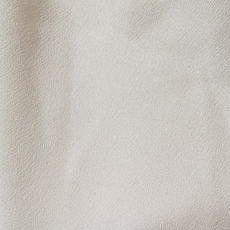 |
|
Mary Magdalene |
Atelier Pierrot |
While often confused with chiffon due to being of similar weave, georgette is actually a bit different. They’re both part of the crêpe family of fabrics due to their twisted yarns, but georgette is denser, somewhat more opaque, and overall more tightly woven, resulting in a lightly crinkled or dimpled texture. It is suitable for and often used for blouses in particular, but Swiss dot finished georgette is a popular option for dresses, as well. |
|
Common fibre types for this fabric include: |
|
Gobelin |
|
Baby, the Stars Shine Bright |
LIEF |
Gobelin fabric is a type of woven tapestry material, named for the family of dyers and weavers who originated the style in France. The material is frequently used in home décor in particular, but occasionally sneaks into lolita fashion as an elaborate material for dresses, jackets, and other pieces such as handbags. Because the actual process of creating gobelin material results in a heavy and stiff fabric, quite a few brands mimic the style as a print instead of a fully woven material. As with jacquard, multiple fibre types are often used in combination to give the material certain properties that individual fibres cannot achieve alone. Notable examples of gobelin fabric include pieces from Baby, the Stars Shine Bright, Jane Marple, Mary Magdalene, Metamorphose temps de fille, and LIEF. |
|
Common fibre types for this fabric include: |
|
Herringbone |
|
Herringbone fabric is a type of twill weave executed typically in wool. At a glance, it looks similar to chevron weave fabrics, but has a break in the “V” shape formed by the twilling. The material is commonly used with a two tone pattern of warp and weft, and is suitable for uniform-inspired designs and outerwear. |
|
Common fibre types for this fabric include: |
|
Jacquard / ジャカード |
|
Angelic Pretty |
Angelic Pretty |
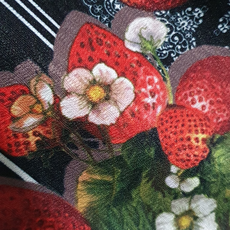 |
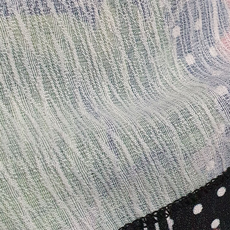 |
LIEF |
LIEF |
This fabric requires a special loom, and is named after its French inventor. The warp and weft are combined in a way that produces a pattern of high and low threads in relief; the back of a jacquard pattern is notable for its extensive weft floats to create the design on its right side. This gives the material a physical, 3D appearance to the wovenimagery. Jacquard can be printed in a single, monochrome set of yarns, or can blend multiple colours with tapestry techniques to create more intricate designs. The former is more common in lolita fashion. It is also possible to print directly onto jacquard, which creates interesting interactions between texture and surface design. Pure cotton jacquards are frequently too stiff and pure polyester jacquards are frequently quite shiny,so often brands will use a blended material instead, to introduce a soft lustre, and better hand. |
|
Common fibre types for this fabric include: |
|
Lawn / ローン |
|
Lawn is a fabric made from combed yarns, with a smooth finish. This is a lightweight material that will require a lining, but is excellent for spring and summer garments. It is semi-sheer and can be stiffened with starch, or left unsized, with a lovely flow. It is most commonly made in cotton, though silk and polyester equivalents are not unheard of. |
|
Common fibre types for this fabric include: |
|
Muslin |
|
While commonly used for initial mock-ups of design (so much so that its name is now synonymous with said mock-ups), muslin can also be used in finished garments. It is a plain weave fabric which comes in a variety of weights, but is excellent for use in warm-weather clothing. It is named for Mosul, Iraq, which is where the fabric is believed to originate. |
|
Common fibre types for this fabric include: |
|
Netting / Tulle / チュール |
|
Netting is a stiff fabric used frequently for trims, petticoats, and other structured elements. It is made when the warp and weft yarns are looped or knotted, or in modern processes, heat fused, around one another instead of being woven in the traditional sense. This process gives netting a great deal of stretch in all directions. Traditionally, these materials were made with silk, but this has become less common as modern processes developed. Tulle is a finer version of netting, with smaller spaces between the yarns. Fine tulle is often embroidered to create soft lace for decoration on lolita items. Both of these materials can be starched for extra structure when used in lolita petticoats in particular. |
|
Common fibre types for this fabric include: |
|
Organza / Organdie |
|
Organza and organdie are types of lawn fabric. When made with silk or cotton, the yarns are treated with acid prior to weaving, to give it a glass-like transparency and stiffness. They are light and do not have the same swishy drape as chiffon, but maintain their structure against gravity to some degree. The polyester and nylon versions of this material are a good choice for making petticoats or for interlining unusually structured garment pieces, such as heavy velvet or large sleeves. It can also make for a lovely overskirt or other structural element accents. See: Lawn
|
|
Common fibre types for this fabric include: |
|
Peachskin |
|
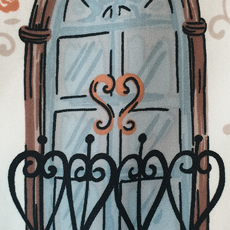 |
|
Metamorphose temps de fille |
|
This material is a sort of polyester-equivalent to flannel or felt. As its name indicates, peachskin has a soft, fuzzy surface with a nap. The process for creating peachskin requires abrading a plain weave polyester to create its surface texture; broadcloth is often a good ground for this material, but you will see twill/drill and occasionally satin weave grounds used as well.. On Lolibrary, you will occasionally find this material mistranslated as “pear skin”. Pear skin fabric is actually a trademarked form of knit material and not used in lolita fashion, however. Peachskin is appropriate for blouses in its light weight form, or for main pieces and jackets in medium to heavy weights. It is most notably used by Innocent World, but has also been used by other lolita fashion brands, such as Metamorphose and Mary Magdalene. A personal note: do not iron peachskin on the right side! Even ironing on the reverse can compress the soft surface created by the abrasion process, and can leave "bald" patches on the material. Steaming this type of fabric is a much better idea. |
|
Common fibre types for this fabric include: |
|
Pongee |
|
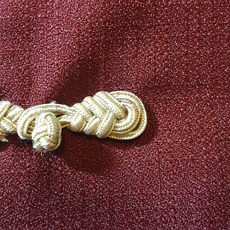 |
|
Metamorphose temps de fille |
Metamorphose temps de fille |
Made to mimic a Chinese form of silk (originally called penchi, “home loom”, silk), this material has a slightly rough, irregularly slubbed surface on both the warp and weft. It is made to have a very slight sheen. Metamorphose temps de fille and quite a few indie brands from China have been known to make use of this material for both printed and solid pieces. |
|
Common fibre types for this fabric include: |
|
Poplin |
|
This is a form of lightweight broadcloth, with the same plain weave pattern and varied thickness on the yarns. This fabric is good for blouses in particular, and items that you want to have a crisp or fresh look, while retaining a lightweight and breathable finish. Poplin is also a good fabric for embellishing with embroidery or self-ruffles. Lolita fashion brands commonly use poplin for blouses, bloomers, and other garments that sit close to your skin. It is a durable material and can usually be laundered without much fuss. See: Broadcloth
|
|
Common fibre types for this fabric include: |
|
Satin / Sateen |
|
While best used by experienced seamstresses and tailors, there are certain exceptions to the general rule of “no satin in lolita!” can be made with the right materials. Not all satins are created equal, and some are certainly appropriate for use in lolita fashion. Matte bridal satins, and other delustred satins such as duchess satin, can work well for structured pieces, while flowing satin charmeuse is an excellent fabric for dramatic draping. The general rule of thumb is to avoid if you’re not sure if it looks okay, though. Like most other polyester fibre fabrics, polyester satin also takes to current printing techniques very well. Similar to satin, sateen uses the same weave pattern, but is executed with shorter fibre cotton or silk yarns. It has a soft sheen instead of a bright lustre, but also has a lovely drape and is somewhat resistant to wrinkles. This material is appropriate for use as both a solid-coloured material and a printed fabric. |
|
Common fibre types for this fabric include: |
|
Seersucker |
|
Seersucker is usually cotton, woven to have alternating coloured stripes with a raised, bumpy texture. It is particularly good for spring and summer garments, and lends itself well to a sweet or country lolita inspired vibe. |
|
Common fibre types for this fabric include: |
|
Slubbed weave |
|
Innocent World |
|
There are woven and knitted versions of slubbed cotton, so be sure to look for a woven version in the case of sewing lolita garments. These have a soft and organic texture that makes for an interesting main piece, vest, or jacket. Some varieties of slubbed cotton weaves include boucle (suiting weight), dupioni, shantung, and butcher weave. Baby, the Stars Shine Bright is particularly fond of using cotton and polyester butcher weave fabrics to add textural interest to their printed designs. See: Butcher weave and Dupioni / Shantung
|
|
Common fibre types for this fabric include: |
|
Swiss Dot |
|
The “dot” part of this fabric refers to its main characteristic: a soft, raised bobble on the surface of the weave. These little dots can be applied as a part of the weaving process, or as a result of final finishing of the material. The material is generally semi-sheer, with a light, smooth drape. It is appropriate for dresses, blouses, and warm-weather garments. Baby, the Stars Shine Bright often uses variations of this fabric, and refers to the variety with larger, fluffy dots as “snow dot” material. |
|
Common fibre types for this fabric include: |
|
Tweed |
|
Tweed is a rough fabric which can have either a plain or twill-based weave. Tweed’s primary characteristic is its variegated colour, which is obtained by mixing variously dyed wools together in the spinning process. It is excellent for outwear, and associated with Irish and Scottish sporting wear and suits. |
|
Common fibre types for this fabric include: |
|
Twill |
|
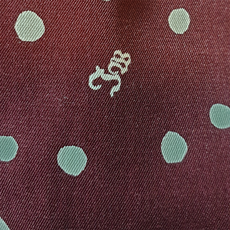 |
|
Innocent World |
|
Twill is a very crisp material suitable for main pieces; it particularly lends itself well to uniform-styled designs. Twill is easily identified by its obvious wale (the wale is a diagonal, ribbed pattern that follows the true bias of the fabric). Multicolour twill patterns include houndstooth and herringbone, though these are rarely executed in cotton. Cotton twill is less prone to wrinkling quickly than lighter weights such as poplin. Wool based twills are excellent for outwear in particular, and create warm, well-insulated garments. See: Herringbone, Gabardine, Tweed and Voile |
|
Common fibre types for this fabric include: |
|
Velvet |
|
This material is best used by experienced seamstresses and tailors, due to its nap and pile. It is excellent for autumn and winter garments, or for use as an accent bodice or lapels, and cuffs. Velvet requires special care techniques due to both its pile and nap. The material is formed from a longer pile than velveteen, and produced from the vertical warp yarns, instead of the horizontal weft yarns. Velvet is smoother and has more drape than velveteen, and feels silky and slick to the touch. Velvet is frequently available as duotone weaves, which add extra lustre to the fabric. See: Velveteen |
|
Common fibre types for this fabric include: |
|
Velveteen |
|
Alice and the Pirates |
Milky Ange |
This material is best used by experienced seamstresses and tailors, due to its nap and pile. It is excellent for autumn and winter garments, or for use as an accent bodice or lapels, and cuffs. Velveteen requires special care techniques due to both its pile and nap. The material is formed from a shorter pile than velvet, and produced from the horizontal weft yarns, instead of the vertical warp yarns. Velveteen is heavier with less drape than velvet, and has a coarser feel to its pile. See: Velvet
|
|
Common fibre types for this fabric include: |
|
Voile |
|
Me Likes Tea |
|
Voile is a soft, sheer fabric made with twisted yarns like gabardine. The yarns are much finer, resulting in a delicate and light fabric. Voile is an excellent choice for sheer details and petticoats. Packing dense ruffles of voile together will create a soft structure to support your main pieces. Because a petticoat on voile’s ability to be packed densely into a space, you won’t need to starch or specially treat your petticoat, and it won’t lose shape over time. It does mean that the petticoat is considerably heavier than organza or organdie equivalents, however. Voile uses worsted yarns and the weft is not visible in front, and the weave used is the same as that used in gabardine.
|
|
Common fibre types for this fabric include: |
|